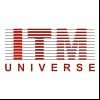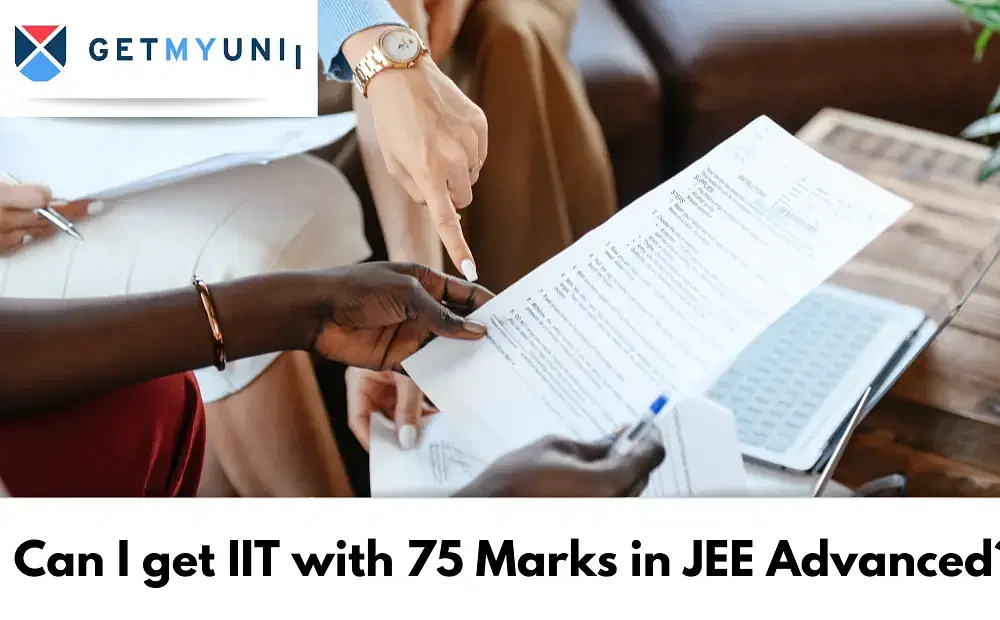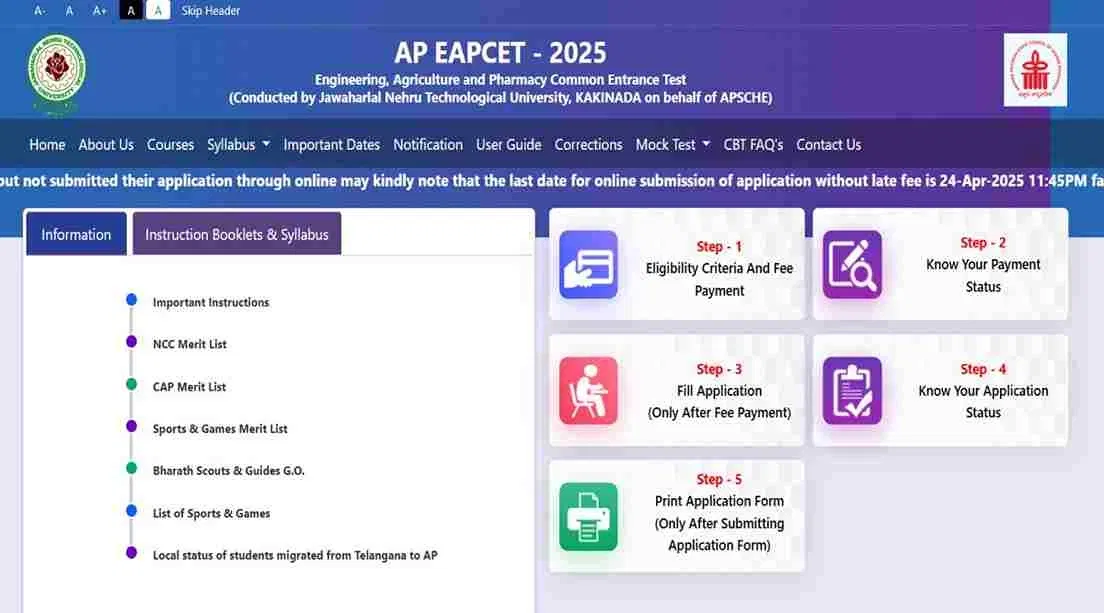JEE Advanced Syllabus 2025 will be released soon in the official website. The JEE Advanced syllabus consist of three sections that are Physics, Chemistry and Mathematics. Students can refer to JEE Advanced previous year syllabus to start their exam preparation.
Table of Contents
JEE Advanced Syllabus 2025: The JEE Advanced Syllabus 2025 includes Mathematics, Chemistry and Physics sections. IThe JEE Advanced syllabus will cover topics related to Thermal Physics, Electricity and Magnetism, Chemical Equilibrium, Electrochemistry, Physical Chemistry, Chemical Kinetics, etc. The JEE Advanced 2025 exam consists of two mandatory question papers, Paper 1 and Paper 2. JEE Advanced Mathematics syllabus 2025 includes subjects such as Sets, Relations and Functions, Probability, Statistics, etc.
IT Kanpur will organise the JEE Advanced exam in April 2025. The syllabus will be released by IIT Kanpur on the official website jeeadv.ac.in. soon and students can refer to the previous year's JEE Advanced syllabus PDF as the current year might cover similar topics.
JEE Advanced 2025 Subject-Wise Syllabus
The subject-wise JEE Advanced 2025 syllabus will be released by the authorities on the official website soon. Students can refer to the expected JEE Advanced 2025 syllabus PDF given below to start their JEE Advanced exam preparation:
| JEE Advanced 2025 Syllabus PDF | Click Here |
JEE Advanced Physics Syllabus 2025
Given below are the JEE Advanced Physics syllabus and the topics covered in each chapter:
|
Chapter |
Topics Covered |
|
General |
General Units and dimensions, dimensional analysis, least count, significant figures Methods of measurement and error analysis, Determination of g using simple pendulum, Young’s modulus - elasticity of the material Surface tension of water by capillary rise and effect of detergents |
|
Mechanics |
Newton’s laws of motion, Kinenatics in one and two dimensions, Systems of Particles, Rigid Body, Linear and angular simple harmonic motions, Hooke’s law, Young’s modulus, Law of Gravitation, Kepler’s law, Geostationary orbits, Pressure in a fluid, Terminal velocity, Streamline flow, equation of continuity, Bernoulli’s theorem |
|
Thermal Physics |
Thermal expansion of solids, liquids and gases; Calorimetry, latent heat; Heat conduction in one dimension; Elementary concepts of convection and radiation, Equivalence of heat and work; First law of thermodynamics and its applications |
|
Electricity and Magnetism |
Coulomb’s law; Electric field and potential; Electrical potential energy of a system, Capacitance; Parallel plate capacitor with and without dielectrics, Ohm’s law; Series and parallel arrangements of resistances and cells; Kirchhoff’s laws |
|
Electromagnetic Waves |
Electromagnetic waves and their characteristics. Electromagnetic spectrum (radio waves, microwaves, infrared, visible, ultraviolet, x-rays, gamma rays) including elementary facts about their uses. |
|
Optics |
Rectilinear propagation of light; Reflection and refraction at plane and spherical surfaces; Total internal reflection; Deviation and dispersion of light by a prism; Thin lenses; Combinations of mirrors and thin lenses; Magnification, Nature of light: Huygen’s principle, interference limited to Young’s double slit experiment, Diffraction due to a single slit |
|
Modern Physics |
Atomic nucleus; α, β and γ radiations; Law of radioactive decay; Decay constant; Half-life and mean life; Binding energy and its calculation; Fission and fusion processes; Energy calculation in these processes, Photoelectric effect; Bohr’s theory of hydrogen-like atoms |
Also Read: JEE Advanced Marks vs Rank
JEE Advanced Chemistry Syllabus 2025
Given below is the JEE Advanced Chemistry Syllabus along with the chapters and topics covered in each:
|
Chapter |
Topics Covered |
|
General Topics |
Concept of atoms and molecules; Dalton’s atomic theory; Mole concept; Chemical formulae; Balanced chemical equations; Calculations (based on mole concept and stoichiometry) involving common oxidation-reduction, neutralisation, and displacement reactions; Concentration in terms of mole fraction, molarity, molality and normality. |
|
States of Matter: Gases and Lights |
Gas laws and ideal gas equation, absolute scale of temperature; Deviation from ideality, van der Waals equation; Kinetic theory of gases, average, root mean square and most probable velocities and their relation with temperature; Law of partial pressures; Diffusion of gases. Intermolecular interactions: types, distance dependence, and their effect on properties; Liquids: vapour pressure, surface tension, viscosity. |
|
Atomic Structure |
Bohr model, spectrum of hydrogen atom; Wave-particle duality, de Broglie hypothesis; Uncertainty principle; Qualitative quantum mechanical picture of hydrogen atom: Energies, quantum numbers, wave function and probability density (plots only), shapes of s, p and d orbitals; Aufbau principle; Pauli’s exclusion principle and Hund’s rule. |
|
Chemical Iconic Equillibrium |
Law of mass action; Significance of ∆ |
|
Chemical Bonding and Molecular Structure |
Orbital overlap and covalent bond; Hybridisation involving s, p and d orbitals only; Molecular orbital energy diagrams for homonuclear diatomic species (up to Ne2); Hydrogen bond; Polarity in molecules, dipole moment; VSEPR model and shapes of molecules (linear, angular, triangular, square planar, pyramidal, square pyramidal, trigonal bipyramidal, tetrahedral and octahedral). |
|
Chemical Thermodynamics |
Intensive and extensive properties, state functions, First law of thermodynamics; Internal energy, work (pressure-volume only) and heat; Enthalpy, heat capacity, standard state, Hess’s law; Enthalpy of reaction, fusion and vapourization, and lattice enthalpy; Second law of thermodynamics; Entropy; Gibbs energy; Criteria of equilibrium and spontaneity. |
Read More: JEE Advanced Chemistry Syllabus
JEE Advanced Mathematics Syllabus 2025
Given below is the JEE Advanced maths syllabus along with the chapters and topics covered in each:
|
Chapters |
Topics Covered |
|
Sets, Relations and Functions |
Sets and their representations, different kinds of sets (empty, finite and infinite), algebra of sets, intersection, complement, difference and symmetric difference of sets and their algebraic properties, De-Morgan’s laws on union, intersection, difference |
|
Algebra |
Algebra of complex numbers, addition, multiplication, conjugation, polar representation, properties of modulus and principal argument, triangle inequality, cube roots of unity, geometric interpretations.Statement of fundamental theorem of algebra |
|
Matrices |
Matrices as a rectangular array of real numbers, equality of matrices, addition, multiplication by a scalar and product of matrices, transpose of a matrix, elementary row and column transformations, determinant of a square matrix of order up to three, adjoint of a matrix |
|
Trigonometry |
Trigonometric functions, their periodicity and graphs, addition and subtraction formulae, formulae involving multiple and sub-multiple angles, general solution of trigonometric equations. Inverse trigonometric functions (principal value only) and their elementary properties |
|
Differential Calculus |
Limit of a function at a real number, continuity of a function, limit and continuity of the sum, difference, product and quotient of two functions, L’Hospital rule of evaluation of limits of functions. Continuity of composite functions, intermediate value property of continuous functions.Derivative of a function, derivative of the sum, difference, product and quotient of two functions, chain rule, derivatives of polynomial, rational, trigonometric, inverse trigonometric, exponential and logarithmic functions, Tangents and Normals. |
|
Probability and Statistics |
Random experiment, sample space, different types of events (impossible, simple, compound), addition and multiplication rules of probability, conditional probability, independence of events, total probability, Bayes Theorem, computation of probability of events using permutations and combinations.Measure of central tendency and dispersion, mean, median, mode, mean deviation, standard deviation and variance of grouped and ungrouped data |
|
Analytical Geometry |
Two dimensions: Cartesian coordinates, distance between two points, section formulae, shift of origin, Equation of a straight line in various forms, angle between two lines, distance of a point from a line; Lines through the point of intersection of two given lines, equation of the bisector of the angle between two lines, concurrency of lines; Centroid, orthocentre, incentre and circumcentre of a triangle.Equation of a circle in various forms, equations of tangent, normal and chord, Parametric equations of a circle, intersection of a circle with a straight line or a circle, equation of a circle through the points of intersection of two circles and those of a circle and a straight line |
|
Vectors |
Addition of vectors, scalar multiplication, dot and cross products, scalar and vector triple products, and their geometrical interpretations |
Also Read: Top 10 Most Sought BTech Courses in IITs after JEE Advanced
JEE Advanced 2025 Syllabus Subject-Wise Weightage
The JEE Advanced Paper 1 and Paper 2 are conducted for 306 points and 183 points for each paper. Given below is the subject-wise JEE Advanced syllabus weightage:
Chapter-Wise Weightage for JEE Advanced Physics
Given below is the JEE Advanced Physics syllabus chapter-wise weightage 2024:
|
Chapter |
Weightage |
|
Thermodynamics |
7% |
|
Electromagnetic Induction |
3% |
|
Electrostatics |
18% |
|
Electric Current |
9% |
|
Magnetism |
5% |
|
Rotational Motion |
8% |
|
Kinematics |
8% |
|
Optics |
3% |
|
Kinematic Theory of Gases |
3% |
Chapter-Wise Weightage for JEE Advanced Chemistry
Given below is the JEE Advanced Chemistry syllabus chapter-wise weightage 2024:
|
Chapter |
Weightage |
|
Periodic Table and Representative Elements |
12% |
|
Transition Elements and Coordination Chemistry |
12% |
|
Atomic Structure |
8% |
|
Thermodynamics and Gaseous State |
8% |
|
Chemical Bonding |
8% |
|
Nuclear Chemistry and Environment |
8% |
|
Chemical and Ionic Equilibrium |
8% |
Chapter-Wise Weightage for JEE Advanced Mathematics
Given below is the JEE Advanced Mathematics syllabus chapter-wise weightage 2024:
|
Chapter |
Weightage |
|
Integral Calculus |
14% |
|
Sets, Relations and Functions |
5% |
|
Matrices |
12% |
|
Probability and Statistics |
5% |
|
Trigonometry & Analytical Geometry |
21% |
Read More: How Many Attempts for JEE Advanced Are Allowed?
JEE Advanced Syllabus and Exam Pattern 2025
The JEE Advanced Examination 2025 will likely be held in online mode for a duration of three hours. JEE Advanced Papers 1 and 2 each comprised 180 marks and 54 questions with 18 questions for each subject.
Given below is the JEE Advanced syllabus and exam pattern 2025:
|
Exam Mode |
Online (Computer-Based Test) |
|
Papers |
Paper 1 & Paper 2 (Compulsory) |
|
Sections |
Physics Chemistry Mathematics |
|
JEE Advanced Time Duration |
3 Hours Per Paper |
|
Number of Questions |
54 Questions (18 from each subject) |
Read More: How to Prepare for JEE Advanced in 2 Months?
JEE Advanced 2025 Marks Distribution for Paper 1 and Paper 2
The candidates must be aware of the negative marking scheme to secure good marks in JEE Advanced Examination 2025. Given below is the marking scheme for JEE Advanced Exam Pattern Paper 1 and Paper 2:
|
Question |
Marks for Right Answer |
Negative Marking |
|
Single Correct Answer |
3 |
-1 |
|
1 or More Correct Answers |
4 |
-2 |
|
Single Digit Integer (Paper 1) |
3 |
- |
|
Comprehension Type (Paper 2) |
3 |
- |
Read More: JEE Advanced Chapter-Wise Weightage: Maths, Physics, Chemistry
JEE Advanced 2025 Syllabus Best Books
It is important for candidates to choose the right study materials and books to prepare them for the JEE Advanced 2025 examination and to score better marks. Given below are the important JEE Advanced books students can refer to while preparing for the exam:
|
Subject |
Book |
Author |
|
Physics |
Halliday, Resnick & Walker |
Fundamentals of Physics |
|
Sears and Zemansky |
University Physics |
|
|
Nelson and Parker |
Advanced Level Physics |
|
|
A.A Pinsky |
Problems in Physics |
|
|
S.S Krotov |
Aptitude Test Problems in Physics |
|
|
Chemistry |
Physical Chemistry |
P. Bahadur |
|
Organic Chemistry |
Arihant Prakashan |
|
|
IIT Chemistry |
O.P. Agarwal |
|
|
General Chemistry |
Ebbing |
|
|
Concise Inorganic Chemistry |
J.D. Lee |
|
|
Mathematics |
Hall & Knight |
Higher Algebra |
|
I.A. Maron |
Problems in Calculus of One Variable |
|
|
Vectors & 3-D Geometry |
Arihant Prakashan |
|
|
Vectors |
Shanti Narayan |
|
|
V Govorov, P.Dybov, N.Miroshin, S.Smirnova. |
Problems in Mathematics |
Read More: Benefits of Getting AIR 1 in JEE Advanced 2024: Ranks vs Marks, Preparation







![Indian Institute of Technology, [IIT] Bombay](https://media.getmyuni.com/azure/college-image/small/indian-institute-of-technology-iit-bombay.jpg)

![Indian Institute of Technology, [IIT] Kharagpur](https://media.getmyuni.com/azure/college-image/small/indian-institute-of-technology-iit-kharagpur.jpg)
![Indian Institute of Technology, [IIT] Roorkee](https://media.getmyuni.com/azure/college-image/small/indian-institute-of-technology-iit-roorkee.jpg)




































POST YOUR COMMENT